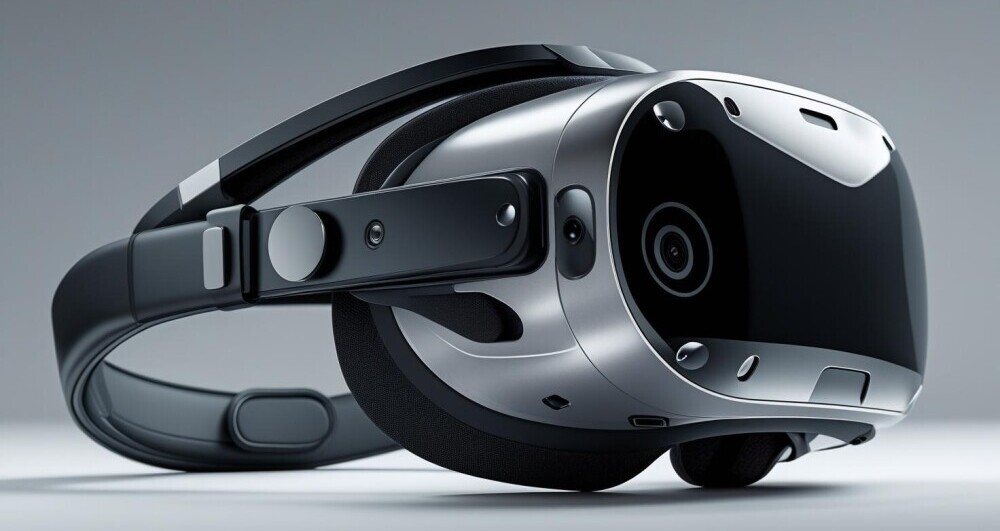 Augmented Reality (AR) glasses are making waves and changing how we interact with the digital world. Unlike Virtual Reality (VR) headsets which immerse users in a completely digital environment, AR glasses layer digital information over the real world. Think of AR glasses as a bridge between the digital and physical realms. While smart glasses like the Google Glass and Meta Ray-Ban might sound similar, they don’t offer the complete digital overlay experience that true AR devices do.
Augmented Reality (AR) glasses are making waves and changing how we interact with the digital world. Unlike Virtual Reality (VR) headsets which immerse users in a completely digital environment, AR glasses layer digital information over the real world. Think of AR glasses as a bridge between the digital and physical realms. While smart glasses like the Google Glass and Meta Ray-Ban might sound similar, they don’t offer the complete digital overlay experience that true AR devices do.
In the race to dominate the AR market, several major players are pushing the envelope. Companies like Apple, Meta (formerly Facebook), and Microsoft are all in it to make AR glasses as common as smartphones. Snap, known for its Snapchat platform, is also a significant contender, exploring new ways to weave AR into daily life. Even smaller startups are entering the fray, bringing fresh ideas and innovation.
Despite their progress, AR glasses still face major technological challenges. Battery life is one of the top hurdles — nobody wants their augmented experience cut short by a dead battery. Then there’s display clarity and field of view, crucial for a seamless AR experience. These devices need to be light enough for everyday wear yet sturdy enough to house powerful components. Overcoming these problems will be key to making AR glasses truly practical for everyday use.
Everyday Use Cases: Redefining Productivity and Interaction
AR glasses are poised to change how we get things done, making everyday tasks more seamless and intuitive. Imagine having hands-free access to important information right in your line of sight. In workplaces, these glasses can offer real-time translations or overlay vital instructions, enhancing productivity and training efficiency without being tied to a screen.
Navigation takes on a new dimension with AR glasses. They can project walking, driving, or biking directions directly onto the path ahead. It’s like a personalized guide showing you the way, all without having to glance down at your phone.
Social interactions are also getting a technological twist. AR glasses can display live captions for conversations, making it easier for everyone to follow along, especially in noisy environments. They could even recognize faces and share relevant information, or allow digital avatars to appear alongside us in real-world settings, turning casual meetups into multimedia experiences.
Shopping might never be the same with AR-enhanced try-before-you-buy experiences. Virtually trying on clothes or placing a new sofa in your living room creates a better grasp of how items fit and feel before you make a purchase.
The gaming world stands to gain immensely too. AR glasses can convert everyday spaces into immersive environments for multiplayer games, where your living room could host a fantasy battlefield or a space adventure right before your eyes.
Industry Transformations: From Healthcare to Education
AR technology is making significant strides in various industries, revolutionizing operations, training, and customer experiences. In healthcare, the use of AR glasses allows surgeons to access vital patient data and 3D models right in their field of view. This can improve precision during complex procedures and offer unparalleled support in medical training, where students can interact with virtual simulations to deepen their understanding.
In the realm of education, AR glasses can transform how lessons are delivered. Imagine classrooms where students learn through interactive 3D models projected into their physical space, making subjects like science and history more tangible and engaging.
Retail is seeing a shift too, with virtual showrooms and shopping assistants morphing how consumers interact with products. AR allows shoppers to see how items fit into their lives, whether it’s spotting that perfect dress or visualizing how a new piece of furniture looks in a home setting, all without physical trials.
Construction and manufacturing are reaping the benefits as well. Workers with AR-enhanced vision can access real-time schematics and safety cues, streamlining processes, and reducing errors on the spot. By merging digital information with the physical worksite, these industries can enhance productivity and safety.
These industry transformations underscore the potential of AR glasses to not just optimize routine tasks, but fundamentally change the way sectors operate, making processes more efficient and responsive.
Social & Cultural Impacts: The Evolving Role of AR
With the rise of AR glasses, we’re not just looking at new technology but at a possible shift in social norms. There’s talk about these glasses replacing smartphones as our primary gadgets, offering a blend of constant connectivity and context-awareness that could make pulling out a device feel like a thing of the past.
Privacy concerns are front and center as these glasses become more pervasive. The idea of always-on cameras and facial recognition brings up questions about consent and data security. It’s crucial to address these before AR glasses become widespread, but they also open up new avenues for exploration, like improved personal safety and security features.
Social etiquette is another area that’s evolving. Wearing AR glasses in public situations could feel as intrusive as talking on a loud phone call in a quiet café. The lines between digital and real-world interactions are blurring, and we’ll need new norms to navigate this.
The potential for increased accessibility is a bright spot. AR glasses could revolutionize how visually impaired individuals interact with their environment through vision assistance. They also hold promise for deaf users, providing real-time captions that level the playing field in communication. This technology could make the world more inclusive by enhancing abilities rather than just replacing gadgets.
The Road Ahead: Predicting the AR Glasses Future
Looking ahead, AR glasses are expected to evolve dramatically over the next decade, becoming smaller, more affordable, and increasingly integrated with artificial intelligence. As these devices shrink and costs come down, their appeal to a broader audience will grow, potentially transforming them from niche gadgets into daily essentials.
The journey from being a curiosity to a necessity could parallel the rise of smartphones. As user interfaces become more intuitive and integration with everyday technologies deepens, the adoption of AR glasses may skyrocket. Imagine having instant context with everything you do, from instant feedback while cooking to enhanced learning experiences for every hobby or task.
However, this future isn’t without hurdles. Regulations will likely play a big role in shaping the landscape, ensuring that privacy and security concerns are addressed. Additionally, overcoming consumer hesitation and convincing them that AR glasses are indispensable will be crucial. These devices will need to prove their worth beyond what smartphones offer today.
Finally, the competition with smartphones may persist. While AR glasses offer unique advantages, their integration with existing devices will be key to appeal. The ongoing challenge will be demonstrating how they complement rather than compete with the tech already in our lives.
